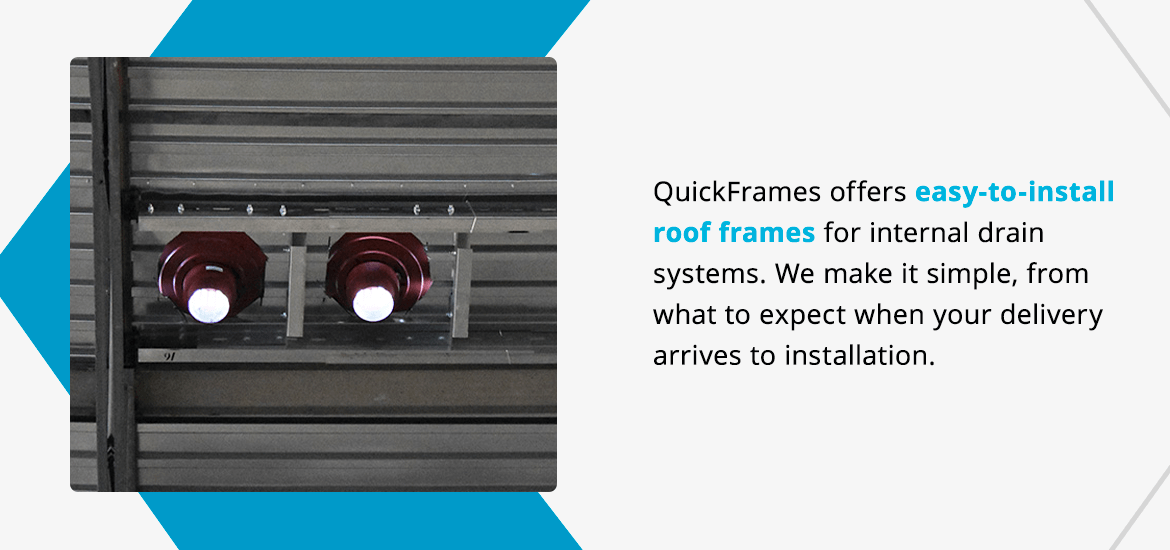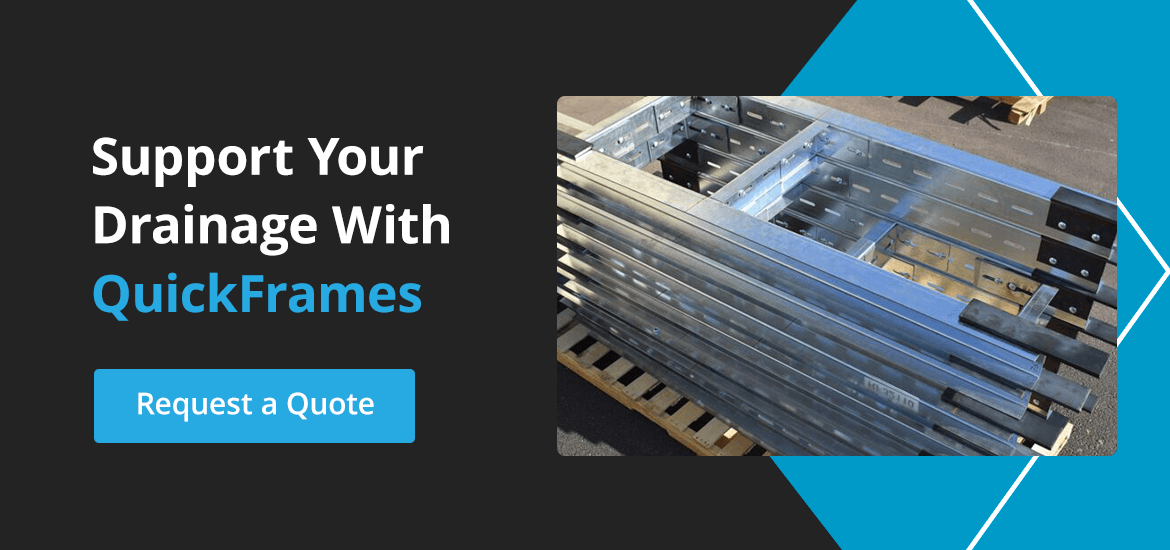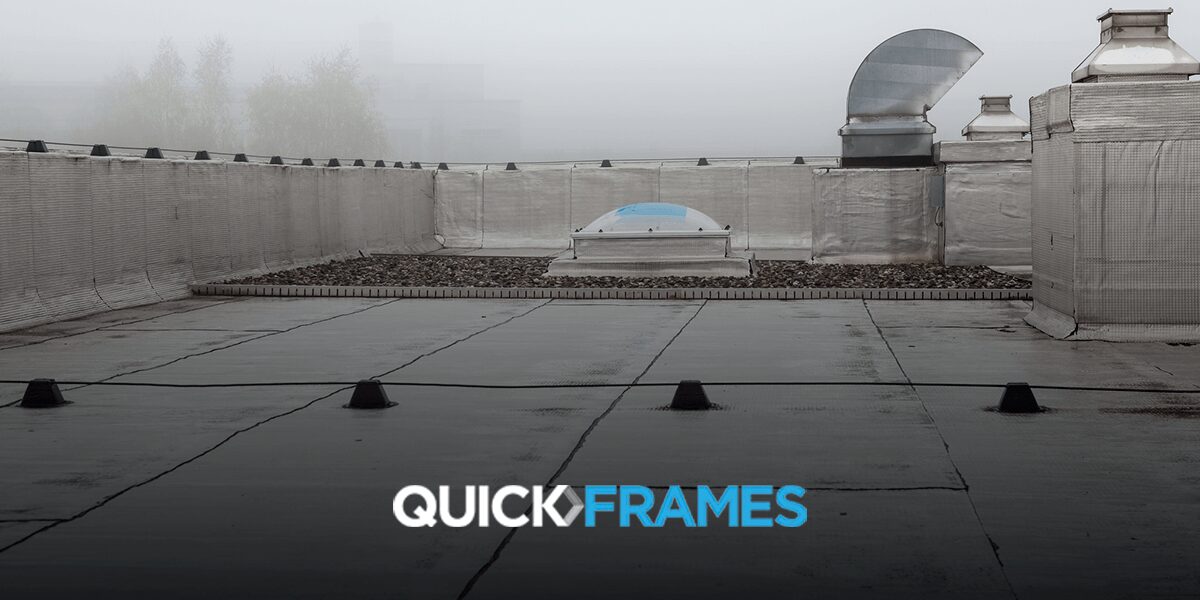Many commercial buildings feature flat roofs because this design offers an interesting aesthetic while providing the space for functional building features, sitting areas or rooftop gardens. Flat roofs are also durable and can withstand weather conditions like hail and wind. However, effective drainage is essential for flat roofs. Sloped or slanted roofs can automatically drain rain and small debris, but flat roofs do not provide the same convenience. Without effective flat roof drainage, your roof could succumb to leaks or structural damage. There are several types of drainage systems for flat roofs — learn more about each type to make the best choice for your property.
Considerations and Features of Flat Roof Drainage Systems
Roof slope plays a significant role in natural drainage. Roofs with steep slopes shed water more efficiently than roofs with little or no slope. However, sloped roofs are not always suitable for all applications, such as commercial buildings needing to place water tanks or heating and cooling units. Thankfully, flat roof drainage systems offer multiple benefits over sloped roofs, including a sleek design, affordable installation and enhanced durability.
The flat roof’s straightforward design makes it easy to install quickly. These roofs demand less effort than other roofing systems, bringing a lower price tag for installation costs. The minimalist design can bring a unique aesthetic to commercial buildings, offering a simple and streamlined appearance.
As with any drainage system, it’s important to consider the maintenance requirements. You will need to evaluate your system to ensure you don’t have any blockages. You’ll also need to clean the components regularly to maximize the system’s life span and prevent water-related deterioration.
Types of Flat Roof Drainage Options
Flat roof systems feature particular designs to collect and channel water from the roof’s surface. However, the system you choose will affect exactly how the roof drains and prevents damage. You can drain a flat roof by selecting one of three drainage systems. Internal drains, gutters and scuppers all have unique advantages, but there are also several things you must keep in mind as well. Here are the pros and cons of each system and how they work:
Internal Drains
Internal drain systems are common for large buildings. These systems work with a system of pipes to carry water and debris away from the building. These pipes are below the roof’s surface, often at the center. Similar to a shower or sink drain, internal systems allow water to travel through the pipes until the pipes can dispense it at the side of the building or into gutters.
Benefits of internal drains include:
- Having protection from severe weather conditions due to the system’s location.
- Carrying water and debris away from a building’s walls and foundation.
- Lacking gutters to boost curb appeal and make it easier to opt for custom fittings.
Like any system, internal drains also have some disadvantages. For instance, maintenance or repairs can be extensive because the system is beneath the roof. Furthermore, debris can clog the system, making it essential to monitor your system and keep it clean. These systems are often more expensive than other flat roof options. However, their enhanced performance and benefits make the cost worth it.

QuickFrames offers easy-to-install roof frames for internal drain systems. We make it simple, from what to expect when your delivery arrives to installation. We offer bolt-in roof frames and drop-in structural frames to suit commercial needs.
Gutters
Flat roofs can have a gutter system, similar to sloped roofs. Gutter systems are common and work by collecting water and directing it to downspouts, which transport the water away from the building’s foundation. As water rolls off the roof’s edge, the gutters capture it and direct it to the desired location. This process prevents water from running down the side of the building, which can damage siding, stucco and windows.
These systems often have a low installation expense and can be easy to install on a flat roof. Gutters help protect the building from water damage and move water away from doorways, walls, windows and the foundation.
Gutters also have several disadvantages. For instance, improper maintenance can lead to the gutters pulling away from the building, creating structural damage. A lack of maintenance can also result in roof rot, making it imperative to administer routine care and preventative services. These systems are more likely to experience clogs and damage from severe weather. While the roof protects internal systems, gutters are exposed to natural elements and conditions like heavy rain, ice or wind. Furthermore, if your gutters have clogs or blockages for prolonged periods, you could face building damage from water overflowing the sides of the gutters.
Scuppers
Scuppers are large, square openings along a roofline on the outermost curb or wall. You can see scuppers on outside walls, and they often have downspouts to collect and direct water away from the building. These systems can be highly efficient and cost-effective with proper maintenance. One of the system’s most significant advantages is rarely experiencing clogs when you use the correct size. These systems may not be the most aesthetically pleasing, but choosing the right material and design can sometimes enhance building appearances.
Although the scuppers rarely clog, you must monitor for clogs in the downspouts. You will often need to clean debris to ensure system efficiency. These systems may also not be as effective against snowmelt or heavy storms as other drainage systems. Additionally, although these systems can be cost-effective, some flat roofs may experience water damage if there is no slope to guide the water to the roof’s edges.
Frame Your Drainage With QuickFrames
Selecting the right drainage system is essential for protecting your building and preventing water damage. Along with addressing your functional needs, efficient systems can enhance aesthetics and offer simple installation. With QuickFrames, you can find the adjustability and durability you need for framing roof drains in a cost-effective way.
QuickFrames is the leader in engineered structural roof frames. Our management team has over 70 years of experience in commercial fabrication and construction, high-volume manufacturing, and product design. Our structural roof frames install quickly and support various construction projects and building features, including skylights, HVAC systems, exhaust fans and curb supports.
Our team brings unrivaled convenience for rooftop equipment installation, working efficiently to bring solutions to new and existing buildings. We provide cost-effective, safer and faster roof framing you can count on. For help choosing the right frame or for questions about our products, reach out to our dedicated team by calling us at (480) 418-0562. You can also quickly request a quote online for a quick turnaround.



